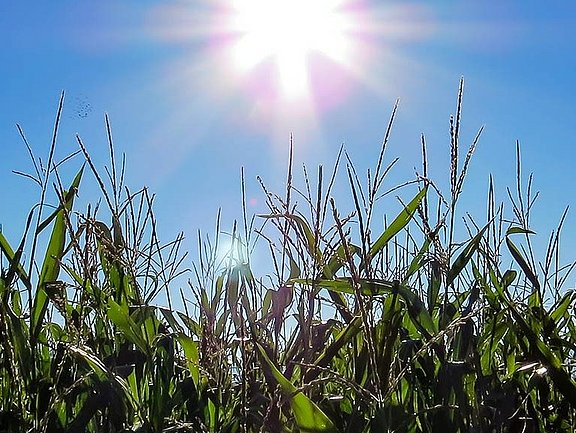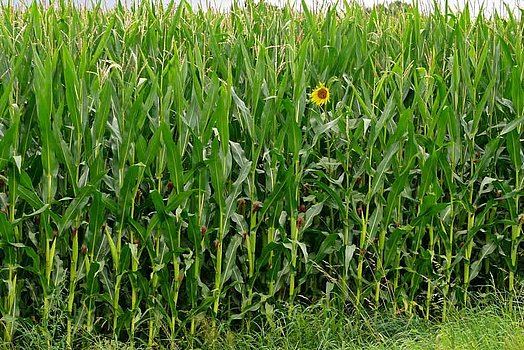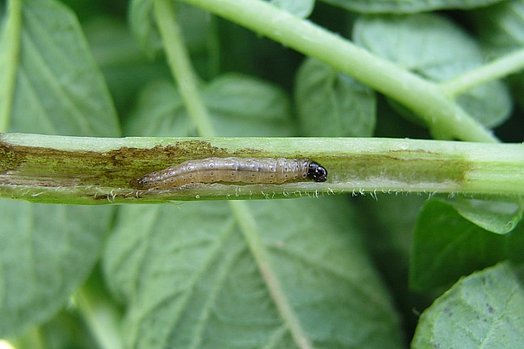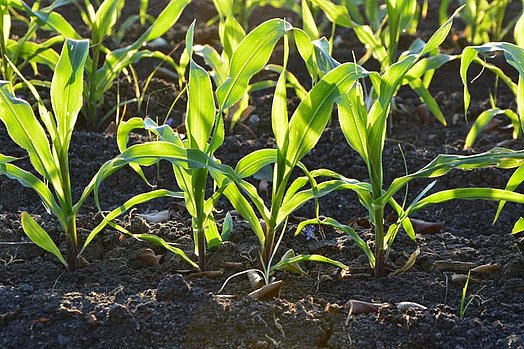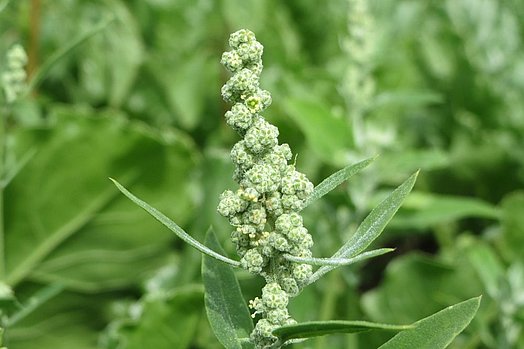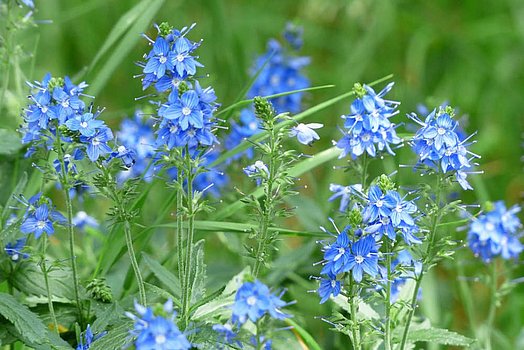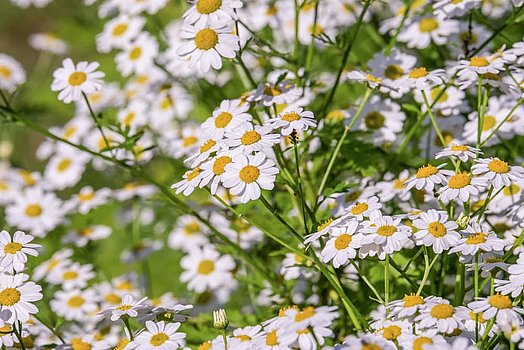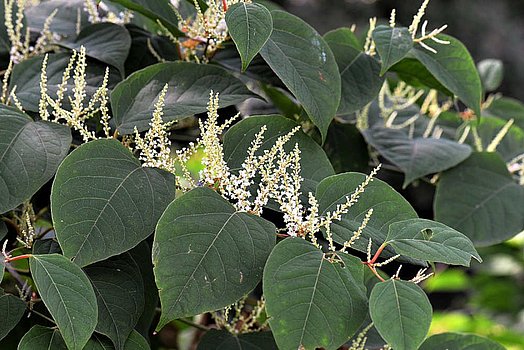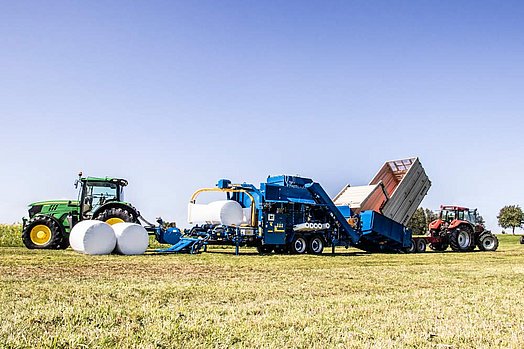Optimum corn cultivation for improving the quality of round bale silage
How can I ensure that my plants are/remain healthy?
Over time, corn has become increasingly important as cattle fodder. The corn plant is the ideal choice for meeting the feeding requirements of high-yielding animals. Aside from grass, corn silage is the most important roughage in dairy cattle rations. Structured roughage is essential for rumination and controls the production of saliva and the regulation of pH levels in the rumen (first stomach). This controls all the fermentation processes.
In light of its high energy content which hardly varies at all, corn is invaluable as a fodder plant. It can account for up to 75% of the total ration. The quality of the silage is therefore extremely important. In this article, we will discuss how to achieve and/or maintain high quality levels.
When is the best time to harvest silage corn?
Around 40% of the corn cultivation area is allocated to whole plant silage. The grain fraction plays a decisive role for the feed value. The crop’s optimum vegetative stage is the beginning to the end of the kernel dough stage. This means 30–35% dry matter content, kernel doughy to doughy starchy, cob slightly moist and the kernels can still be scratched with a fingernail.
Premature silaging usually results in too low an energy content. Incorrect fermentation can occur on account of the loss of fermentation sap. If harvesting is done too late, compaction is more difficult. This in turn increases the risk of subsequent warming. When it comes to subsequent warming, consideration must also be given to the choice of silage additive.
What are the most common causes of loss/damage?
It is important to identify causes of loss/damage at an early stage and to address them swiftly with the appropriate measures. The following are the most common causes of corn loss/damage:
One often causes the other. If, for example, the animal pests’ invasion of the plants has gone too far, this can lead to a fungal or viral infection. Only healthy plants will be able to weather the storm. Containment measures are one approach and ensuring that plants stay healthy right from the outset is another. This starts right from ensuring decent soil tillage/stubble cultivation.
For more information on mycotoxins in corn, read our article entitled “Feed quality in the case of corn bales”
Which type of fertilization is useful for corn cultivation and at which points in time?
When determining the nitrogen requirements of corn, the results of your own samples will be more accurate than general averages. Management measures for individual areas should be taken into consideration here and all site-specific factors should be included. The closer the soil sample is taken to the time period in which the plants require fertilization, the more accurate the findings of the analysis will be.
In the case of corn, fertilizing below the roots in the case of poorly supplied areas, soil structure deficiencies and unfavorable weather conditions is now standard practice. Fertilizing below the roots often ensures that the nutrients are released into the ground at the same time as sowing. It places the nutrients exactly where the plant needs them. This results in surplus yields. Mineral or organic methods can be used to fertilize below the roots.
Attention needs to be paid to whether the soil is tending towards phosphate fixation. If the pH value is too acidic or too alkaline, the available phosphate will be fixed and thus not available to the plants. After the pH value has been measured, the fertilization must be adjusted accordingly.
Corn is extremely sensitive to nutrient deficiencies, especially in the early growth stage. Nitrogen/phosphate fertilizing below the roots at the time of sowing has proven successful. Additional doses of nitrogen from the 6-leaf stage complete the process. The use of calcium cyanamide is also recommended in the event of a wireworm infestation. Fertilization with magnesium should also be carried out in the event of a broad K:Mg ratio (potassium : magnesium ratio).
The injection of liquid manure also ensures better utilization of nutrients. At the same time, it also has positive effects in terms of water conservation and climate protection. Attention should also always be paid to ensuring that no structural damage is caused to the soil. This can be prevented by adjusting tire pressure and using wide tires.
What are the main weeds that affect corn and how can they be contained?
It is important to keep corn largely free from weeds up until the 8-leaf stage. This protects it from yield losses. This can be done with a combination of chemical and mechanical weed containment measures adapted to suit the site in question. However, it is essential to ensure that water is protected if herbicides are used. In the case of very permeable sites, the recommendation is not to use chemicals as a preventative measure.
The main weeds known to affect corn are:
Goosefoot
Orache
Knotweed
Speedwell
Chamomile
Galinsoga
Geranium species have now also become a difficult weed to combat. The millet spectrum in particular also likes to develop in typical corn sites.
The goosefoot species are the most common types of weed that affect corn, accounting for 80%, followed by chickweed and black bindweed. The plants are extremely sensitive to competition from weeds in the early growth stage. The crop will not be able to take root if the weed containment measures are insufficient. As from the closing of the rows, weeds such as bindweed species become an issue as they can overrun the corn.
Are corn catch crops an alternative?
Increasing requirements in terms of water conservation and environmental protection call for new solutions and approaches. Catch crops, for example, are an option for corn here. Whether they are intended to combat nitrogen output, erosion or soil compaction following harvesting, catch crops boast advantages that also make business sense. Silage corn or even grain corn can remove a very large amount of humus from the soil. During the slow early growth stage, this can, for example, lead to erosion in the event of heavy rainfall or subsequent soil compaction during harvesting. Catch crops bind nitrogen and thus prevent it from leaching into the groundwater. They promote soil life and provide relief in the case of tight corn crop rotations. They provide immediate soil cover following harvesting, prevent any serious accumulation of weeds and can also additionally be used as grass silage in cattle farms. They can also be used as substrate in the production of biogas.
Conclusion – how to ensure healthy corn
Adopting the integrated crop management (ICM) approach to agriculture helps in preventing issues. Precautions such as field sanitation, soil tillage during seedbed preparation, cultivation of intermediate crops with subsequent mulch tillage for the suppression of weeds or the use of catch crops form a good starting point. All of these measures help in producing high-quality corn with a good yield and make it easier to process it into optimum feed. As there are lots of approaches to corn cultivation it is worth testing them out. The increasing requirements in terms of climate protection and water conservation must, of course, always be taken into consideration, as must the specific conditions of the site in question.
As you can see, there are many factors at play in ensuring first-rate silage quality for corn. Once that is achieved, our LT-Master and VARIO-Master are the ideal machines for further processing the silage into round bales.
